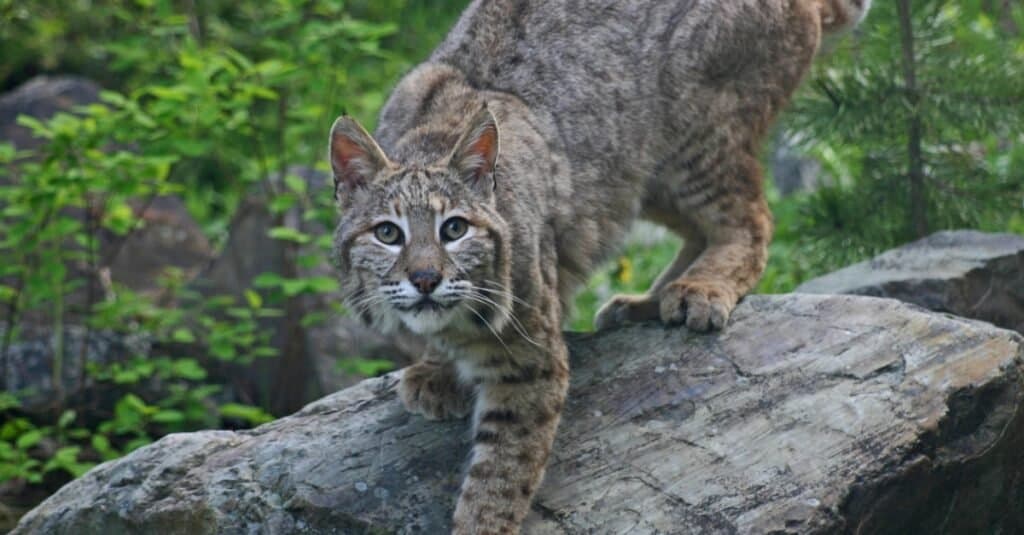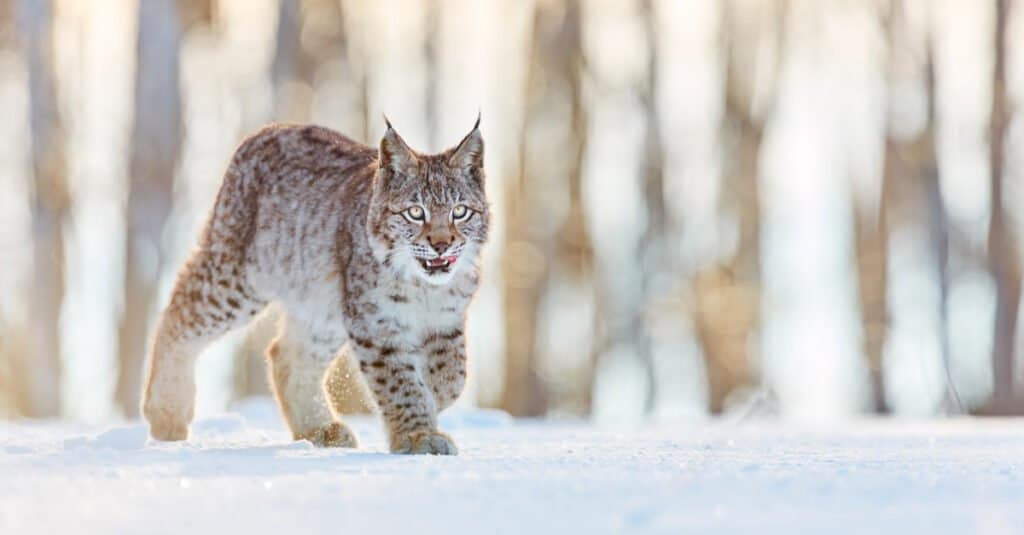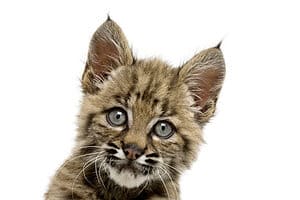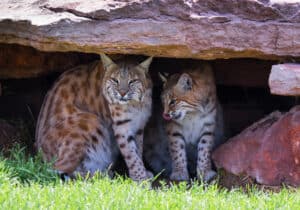Montana is situated immediately below the southern border of Canada, north of Wyoming, making it an ideal habitat for many birds and land mammals. Although a large portion of Montana is lightly populated, it is home to a wide variety of native animals, including the black-footed ferret, which is the most uncommon mammal in North America. 440 distinct bird species, several reptiles and amphibians, and a large number of wild game animals are present in the state. But are bobcats among them?
Well, bobcats are endemic to certain regions of the continent and are the most common wild cat. Bobcats do not, however, live in every state in the union. While other states have robust and healthy populations of bobcats that are sufficient to allow for legal hunting and trapping, the species is classified as vulnerable in some states due to diminishing numbers. But what might be the case in Montana? Below, we will discuss everything you need to know about bobcats in Montana.
Are There Bobcats in Montana?

Native to Montana, bobcats thrive in the state.
©iStock.com/twildlife
Montana is one of the fortunate states in the United States to still have a thriving bobcat population. Bobcats are native to the state and widely distributed to every nook and cranny, where they can find their preferred habitat. Some bobcats may wander across human settlements and suburban settings when attracted to food and cattle.
Despite the state’s constantly shifting environment and habitats, bobcat populations are growing in Montana, and the wild cats are frequently spotted in the state’s woodlands, occasionally in suburban communities. In the state, bobcats are a regular sight. You can locate them in various settings, including abandoned mine shafts, between boulders, inside hollow logs, and inside caves.
Bobcats are among the three wild cat species in the state. Statewide, there were 8,154 bobcats in 1983, and the population started to increase. At the time, to monitor population trends, distribution, and age, a surveillance plan was created by Montana Fish, Wildlife, and Parks. Since 2000, the bobcat population in the state has been fluctuating, but most places have not experienced a significant change.
Where Do Bobcats Live in Montana?

Bobcats often select natural rocky sites with large prey concentrations and rich vegetation for their dens.
©iStock.com/Anita Elder Design
Bobcats utilize a variety of habitats, and due to the widening reach of urbanization, they have also been accustomed to spaces made for humans. These wild cats are known to be animals of “patchy” countries as they are very adaptive and have learned to adapt to the wide and varying topography of the continent. Yet, they often prefer rimrock and grassy areas. In central Montana, bobcats mostly go for covered areas with high prey densities. At the same time, in western Montana, they often create dens within caves, in hollow hogs, in abandoned mine shafts, or between boulders.
They often select natural rocky sites with large prey concentrations and rich vegetation for their dens. Although they may always be active, they are mainly nocturnal. While bobcats are solitary creatures, their elusiveness makes it challenging to watch them in the wild.
Bobcats were once widespread throughout the lower 48 states and some parts of southern Canada and northern Mexico. They thrive in various habitats across the states, including pine forests, swampy bays, well-vegetated rocky hillsides, mountain woodlands, coniferous forests, deserts, and occasionally suburban areas. Because the different coat colors enable the individual to remain as hidden in its surroundings as possible, the exact look of the bobcat depends on what kind of habitat it is found in. The original range of the bobcat encompassed all of North America, but some places have seen a decline in bobcat populations due to habitat destruction and hunting for their fur.
Bobcat Hunting in Montana
Since the bobcat population in Montana is not threatened in any way, hunting and trapping are legal in the state. In Montana, the bobcat hunting season is divided into seven Trapping Districts (TD), each with its own dates and bag limitations. The season in TDs 1-3 lasts from December 1st to February 15th, while the season in TD’s 4-7 lasts from December 1st to March 1st. Also, electronic calls and nighttime hunting are forbidden in the state. For residents, Montana is a good place for bobcat hunting because plenty of them wander in their natural habitats. For non-residents, however, laws are pretty simple – you cannot hunt in the state.
Here are some other rules regarding bobcat hunting and trapping in Montana:
- Hunting is only allowed in the daytime.
- To hunt and chase bobcats, residents must have a current trappers license, or if they merely want to chase bobcats, they must have an RHTL (resident hound training license).
- The only animal allowed to be hunted under the law’s definition of a ”fur-bearing mammal” is the bobcat.
- Electronic callers are prohibited; only hand and mouth calls are permitted.
- The time window for hunting is from a half-hour before dawn through a half-hour after dusk. During the hunting season, chasing bobcats is permitted every day from a half-hour before sunrise to a half-hour after sunset.
Due to diminishing populations, bobcat hunting and trapping are being investigated in some states, including Illinois and Colorado. California outlawed hunting in 2019, while Iowa scrapped plans to expand hunting last year due to public opposition.
Are Bobcats Dangerous in Montana?

Bobcats’ attacks on humans are rare.
©Petr Salinger/Shutterstock.com
Fear not—bobcats are not known to attack people. Despite the rarity of bobcat attacks, no one should attempt to approach or handle a wild bobcat or her young. They usually go unseen because of their timidity and desire for cover. As a result, attacks by bobcats on humans are almost unheard of, and they live peacefully alongside large human populations.
Bobcats rarely cause problems and normally avoid areas with a lot of development and human activity. However, these felines are more inclined to visit your property if food is nearby. They are not a serious problem, although they occasionally prey on smaller livestock like goats or chickens.
Up Next:
Bobcats in Texas: Types & Where They Live
Watch a Bobcat Fight a Rattlesnake to the Death
Bobcat vs Lynx: The 4 Key Differences Explained
The photo featured at the top of this post is © Laurie E Wilson/Shutterstock.com
Sources
- Montana Field Guide, Available here: https://fieldguide.mt.gov/speciesDetail.aspx?elcode=AMAJH03020
- The Predator Hunter, Available here: https://thepredatorhunter.com/laws-for-hunting-bobcats-in-montana/
- Act For Libraries, Available here: http://www.actforlibraries.org/wild-felines-of-montana/
Thank you for reading! Have some feedback for us? Contact the AZ Animals editorial team.






